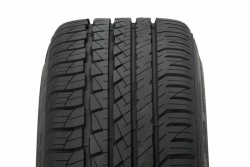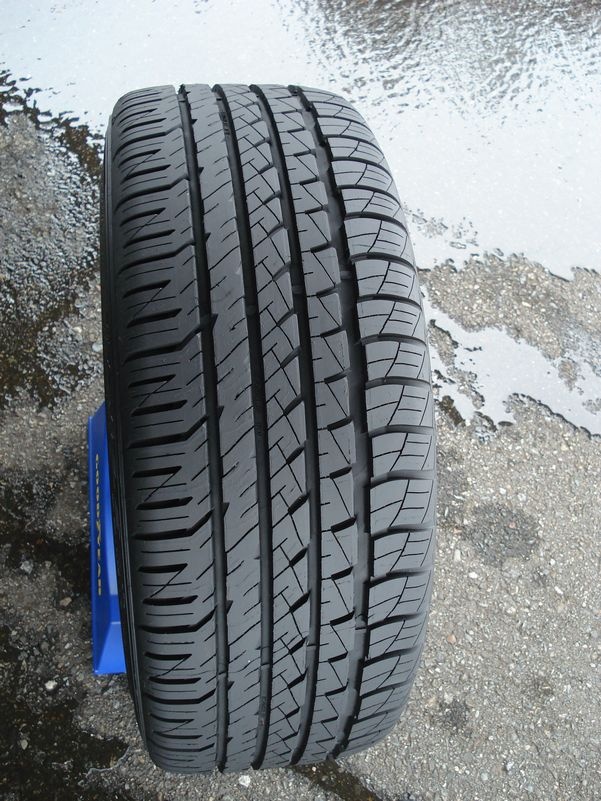 Goodyear F1 Ultra High Performance all-season tire. Click image to enlarge |
|
Tire Review: Bridgestone Potenza S-04
Manufacturer’s web site |
Review and photos by Michael Schlee
Photo Gallery:
Goodyear Eagle F1
Snoqualmie, WA – Choosing the right replacement tire for your vehicle can be a dizzying experience. With all the choices on the market, it is hard to find exactly which tire is right for you. All Season, summer, high performance, ultra high performance, low rolling resistance, etc.; the combinations and choices can be endless. And there is about to be one more choice out there — Goodyear is ready to release their newest tire, the Eagle F1 Asymmetrical All-Season. Thankfully though, this seems to be a good one.
This new all-season tire is inspired by Goodyear’s summer tire, the Eagle F1 Asymmetric 2. Using a specialized tread compound with functionalized polymers for enhanced performance characteristics, such as wet traction and dry handling, Goodyear claims the tire uses proven, race-bred technology. This isn’t just marketing fluff either; Goodyear has a serious racing pedigree in professional motorsports. Their first race tire turned a wheel in anger in 1901 for Henry Ford. Goodyear has since amassed 368 victories and 25 Driver’s Championships in Formula 1 and has been equipped on every NASCAR champion’s car since 1968; a pretty impressive statistic since they have only been the exclusive tire manufacturer for that series since 1997.
 Goodyear F1 Ultra High Performance all-season tire. Click image to enlarge |
Having this kind of pedigree and experience in your back pocket is a good thing as the performance-tire market is heating up in North America. Last year 247 million replacement passenger vehicle tires were sold in North America; 23 percent of this market was for performance tires. The performance tire segment has seen steady growth over the past several years, no small part being attributed to OEMs. There seems to be a performance tire option on just about every new vehicle for sale on the market today; even the Toyota Sienna has a V-rated tire option on SE models. Another driving force behind the increase in performance tire sales is with the vehicles themselves. There is a constant push for increased wheel sizes and shrinking sidewall depths by OEMs, which leads to a need for more performance tires. Case in point, in 1994 the base Chevrolet Camaro came with 16-inch wheels, whereas in 2012, it comes standard with 20-inch wheels.
So what separates this specific tire from a sea of other ultra-high-performance tires? Well, for starters Goodyear wanted to make this an all-season tire that could handle snow as well as wet and dry road conditions. Several weeks were spent winter testing the vehicle across the world to assure there was decent grip in the white stuff. “Traction Teeth” were designed into the tire to provide further “biting” edges for traction in rain and snow and work in conjunction with “TredLock Technology” that consists of microgrooves providing more biting edges for enhanced wet traction.
The tire isn’t just a foul weather specialist, however. It was created with a dry-handling zone and an all-season zone, giving it a bit of a dual personality. The outboard side of the tire has 7 percent more net to gross tread (rubber) than the inboard for dry-weather handling. This also helps to provide grip in the wet as it expels rain through the inboard side, which was good since we were never able to test the tire in dry conditions during our day at Pacific Raceways just outside of Seattle, Washington. To say it rained all day would be an understatement. A record was set that day for total rainfall accumulation in a single day and gave us a very good firsthand experience on how the tires behave in the wet and against their competition.











